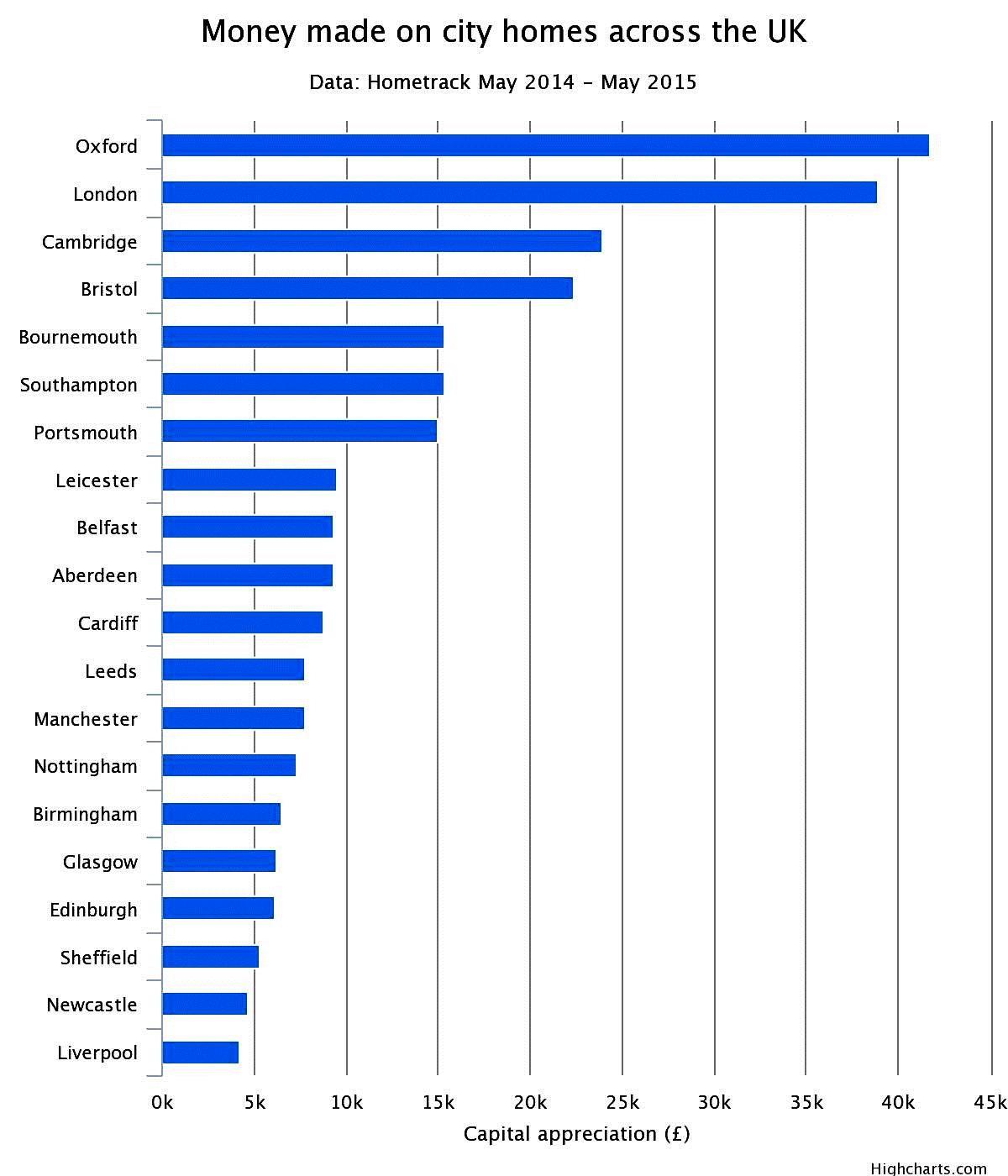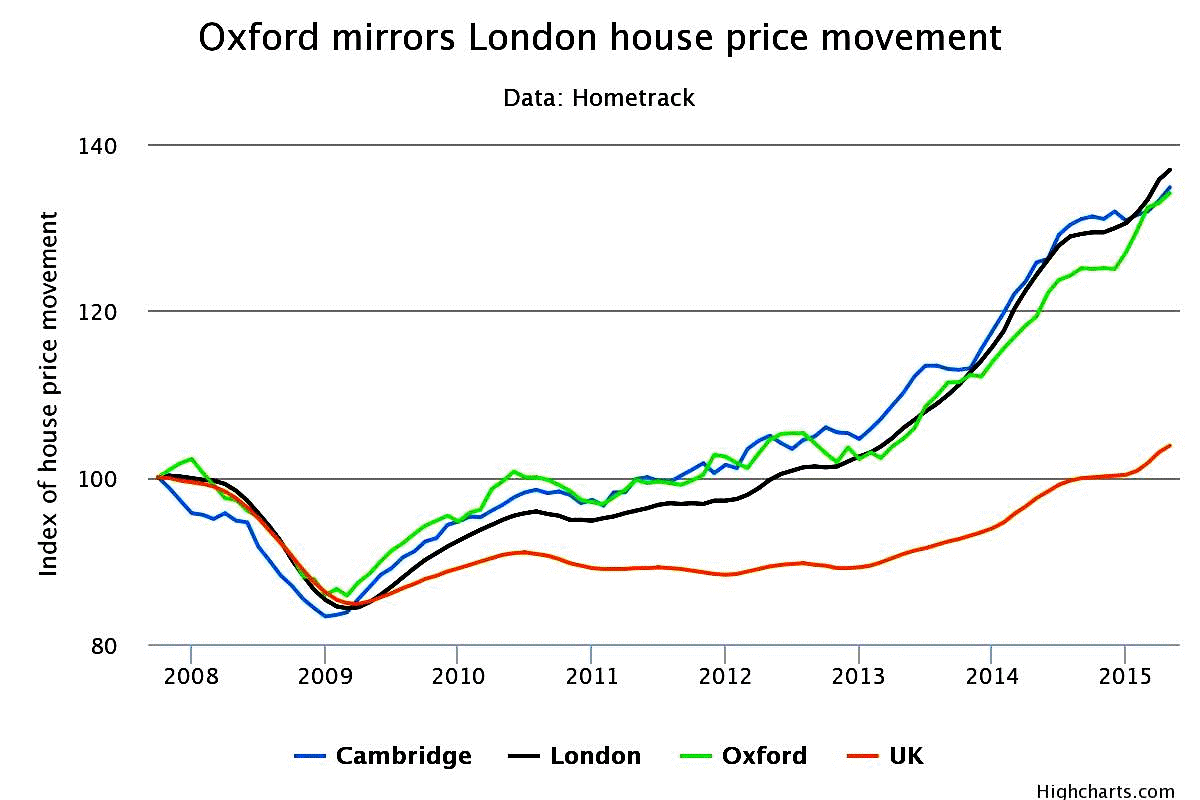Rocketing house prices and not enough homes - welcome to the UK's hottest housing market
06-27-2015
Britain's newest property problem child - and it's no longer London
House price growth in Oxford has outpaced every other city in the UK over the last 12 months.

By Anna White, Property correspondent
Residential property values in Oxford have surged by £41,700 on average over the past year, nearly four times higher than gains in the wider UK and a whisker above the £38,900 house price rise registered in London.
House prices in the city of spires jumped by 12.3pc to an average of £380,100 in the 12 months to May - growing at a faster rate than any of the other 19 UK cities included in the UK Cities House Price Index from Hometrack.
By comparison, property prices across the country increased by 6.5pc - or £11,500 on average - over the same period, while in London, average prices appreciated by 10.1pc to £425,700.

The dramatic house price growth has stretched affordability Oxford. The house price-to-earnings ratio is now 12.4, just shy of London’s 12.5, which means that it’s almost as difficult to buy a house in the university town as it is in the capital.
Richard Donnell, director of residential research at Hometrack, said that Oxford is a popular place to live and that houses there are in short supply.
"There is a mixture of investors buying up student accommodation, while house building is constrained by the surrounding greenbelt,” he said.
“It also has a strong local economy and is benefitting from the recovery in the South East of England."
However, Mr Donnell added that the Oxford housing market has mirrored that of London, which is now cooling.

“Affordability pressures will bite at some point in the high-value, high-growth markets.
“The double-digit price growth registered in cities such as London, Oxford and Cambridge is being sustained by a lack of supply and below average transaction volumes, with a third of sales funded by cash or buy-to-let mortgages," said Mr Donnell.
The central London property market has cooled in recent months. Growth began to slow in the second half of last year, following a prolonged period of what many regarded as unsustainable house price increases.
The frenzied market conditions have forced many Londoners further out of the capital, as families and first-time buyers move away in order to upsize or to simply get a foot on the property ladder.
In turn, this has driven up prices in the outer boroughs, surrounding commuter belts and cities in the South East.
But other regions are also flourishing. In the South West, Bristol, with its green parks and waterways, had the second-highest growth rate last year. Prices there rose 10.9pc, taking the average price tag on a property in the city to £227,600.
Although all 20 cities in the index recorded house price gains, Liverpool, Newcastle and Sheffield came bottom of the pile, with growth rates of 3.9pc, 4pc and 4.4pc respectively.
Moreover, prices in these three cities still linger below their 2007 peaks, by 14pc, 8.5pc and 3.8pc respectively.
However, that’s not nearly as bad as Belfast. There, property prices are a staggering 47.7pc below their pre-crisis levels.
All of the cities in the index, apart from Aberdeen, reported month-on-month gains in May, buoyed by the conservative victory in the general election.
"House prices have picked up momentum post-election, but an increasing proportion of households are also feeling the benefits of the improving economy,” he said.
“That means that house price growth is set to continue in the coming months. The greatest risk is an earlier than expected increase in interest rates, which would knock market sentiment.”
Analysts expect the Bank of England will raise interest rates in the first-half of 2016.
Oxford fact file
House price earnings ratio: 11.4 (South East average 8.5)
Average years between moves: 23.8 (South East average 18.7)
Average rent (£pcm): £1,200 (South East average £720)
Average gross yield (%): 4.7pc (South East average 4.9pc)

